True Factors of Happiness
Story-telling dashboard exploring the root of happiness.
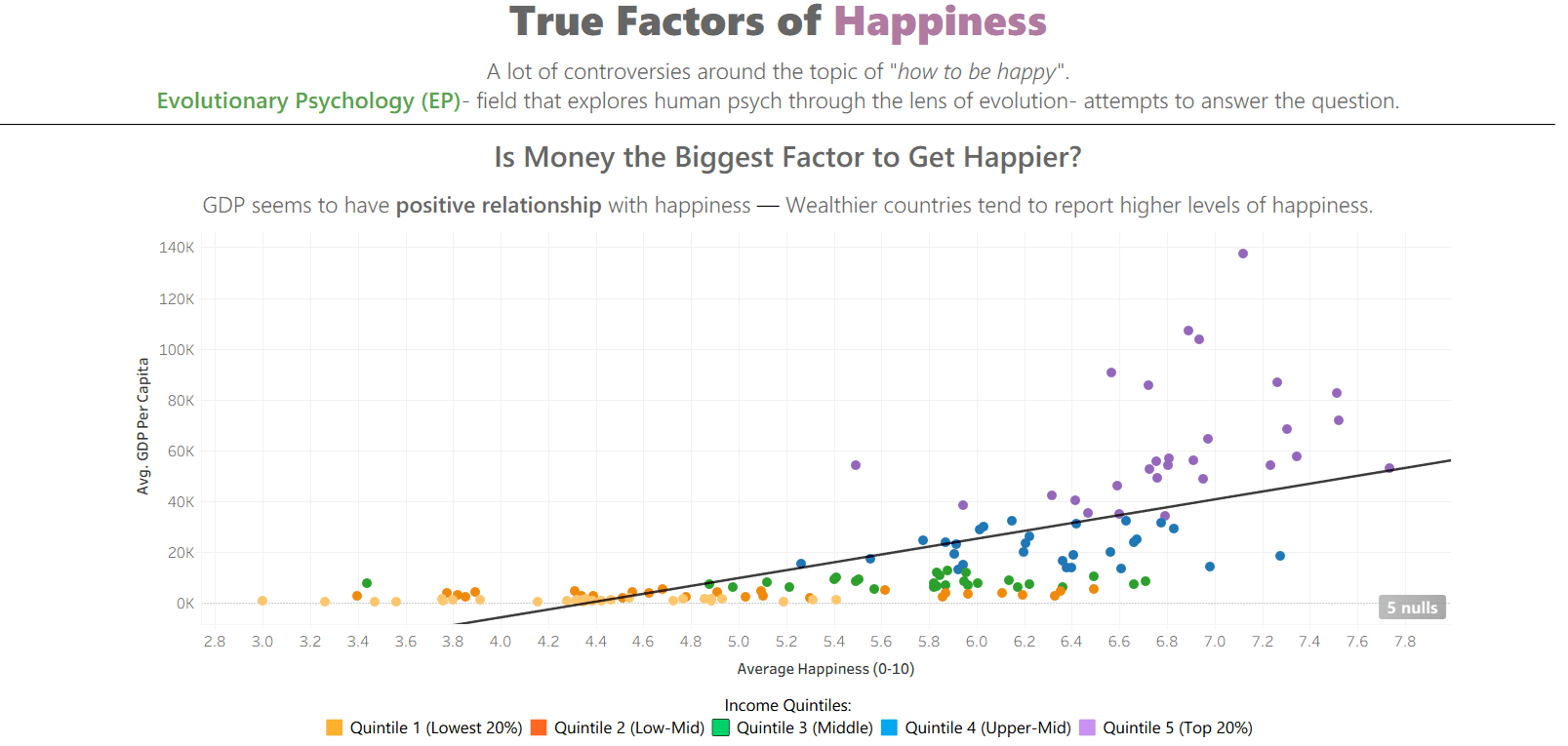
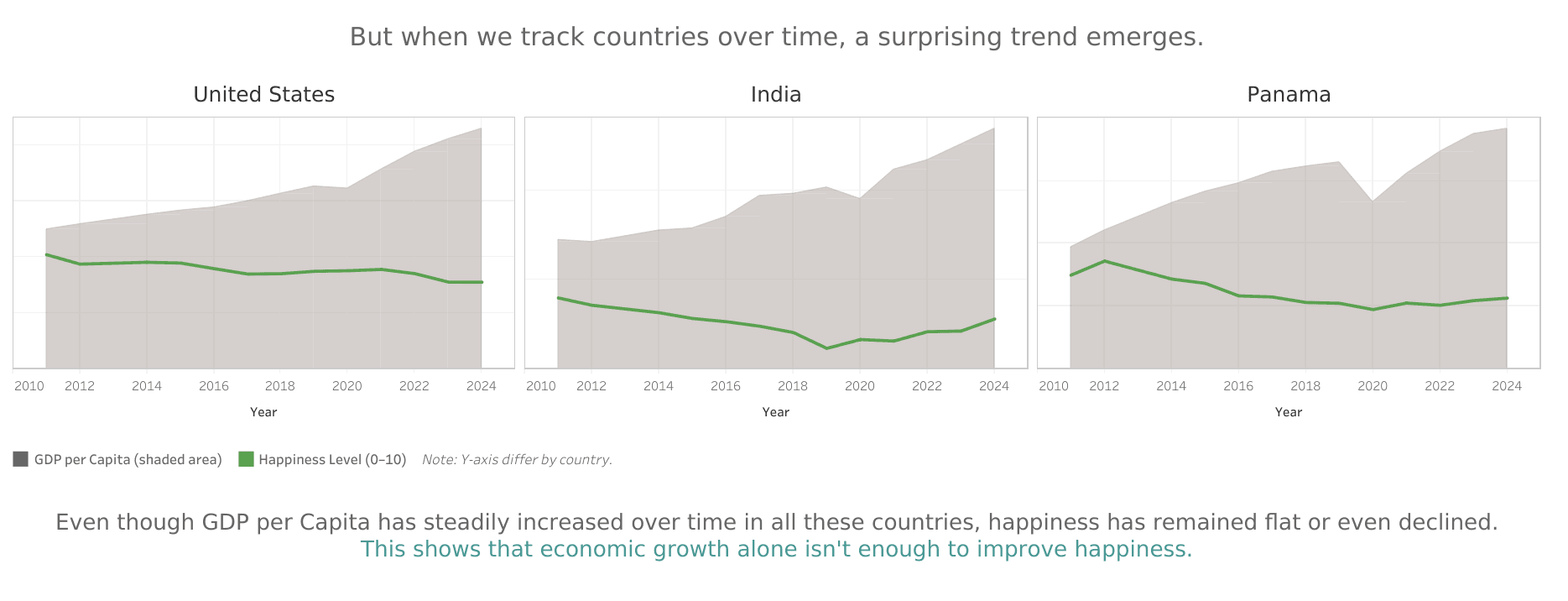
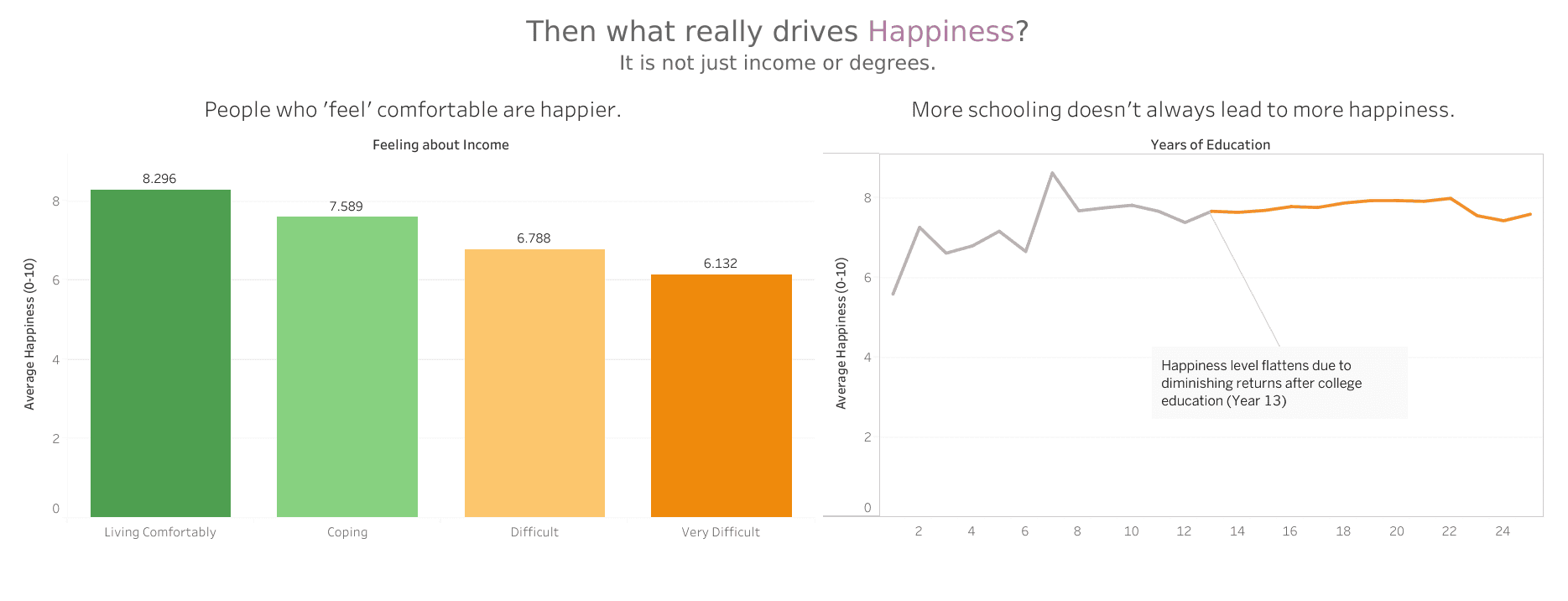
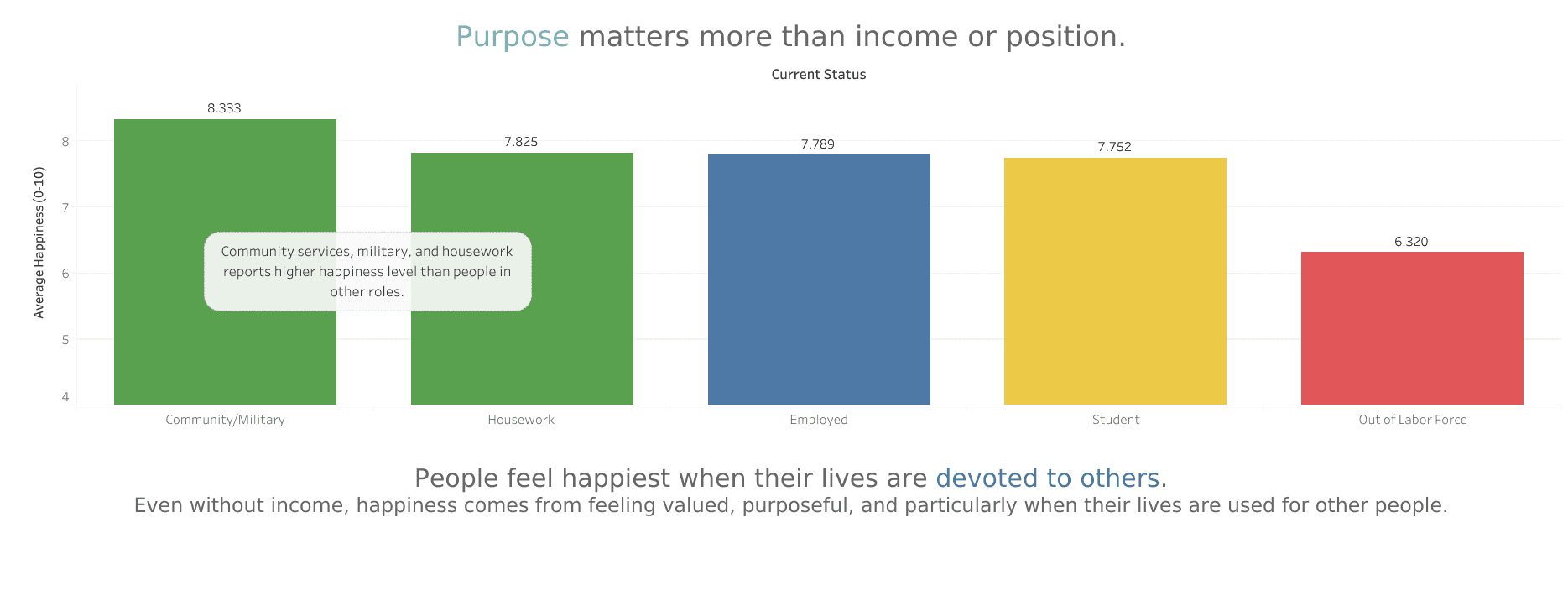
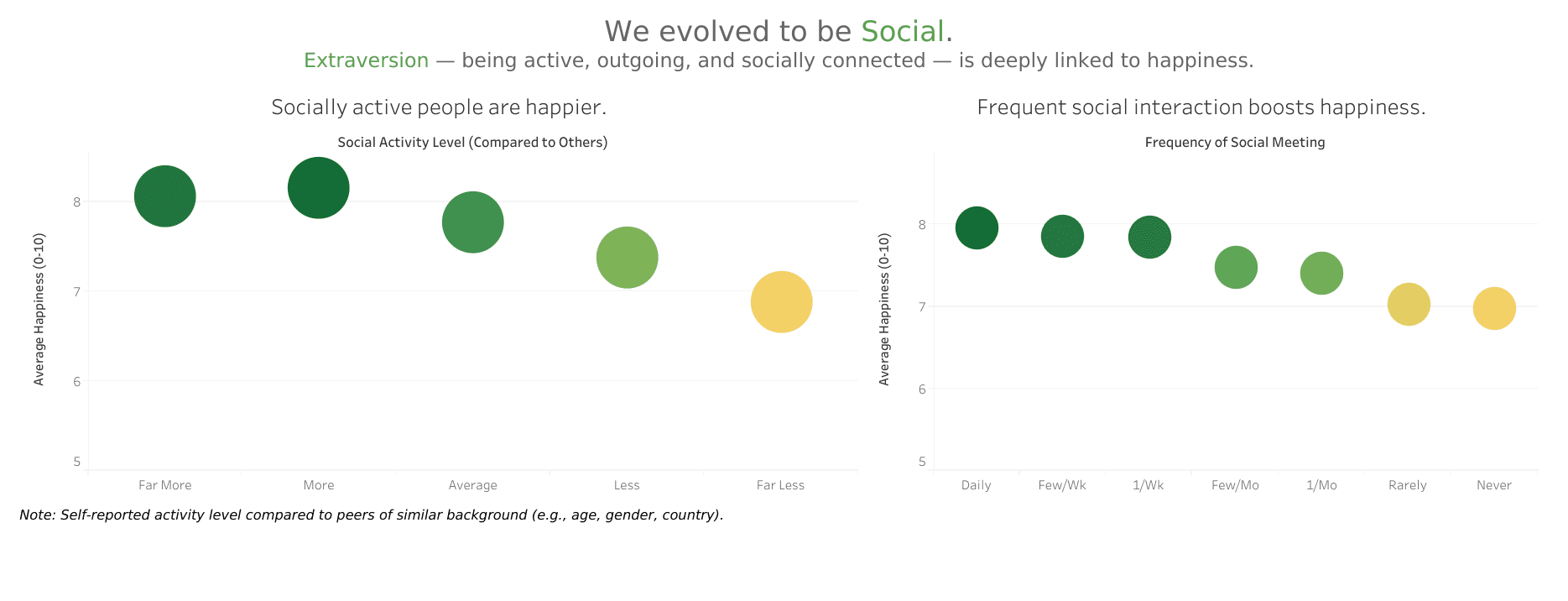
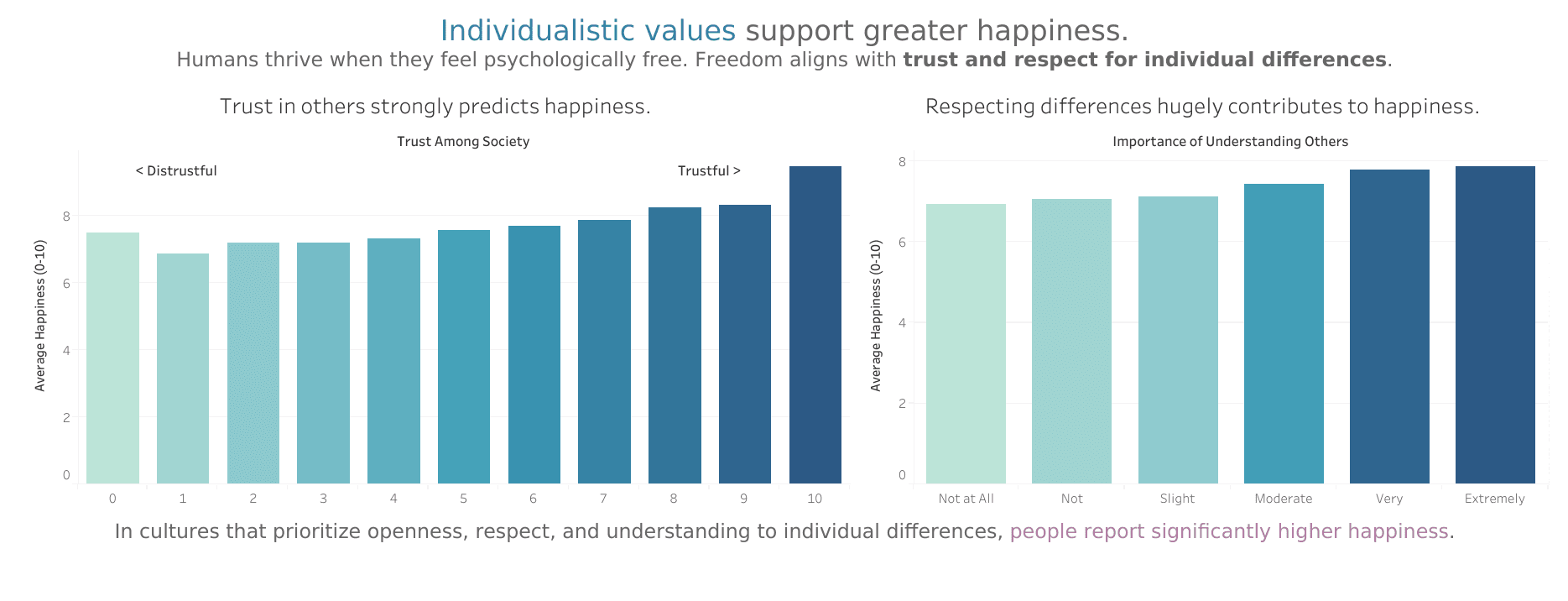
Tools
Overview
A narrative data visualization project that refutes common beliefs on money as the 'source of happiness'. Project presents various factors better supported by behavioral science and evolutionary psychology.
This visualization insists two points: (1) Refuting common perceptions of high correlation between Money & Happiness, (2) Stating unpopular root of happiness supported by evolutionary psychology.
Datasets
Primarily utilized cross-national survey data.
European Social Survey 11 (ESS11): provided reliable self-reported data for people's social activeness, various perceptions on life, and life satisfaction.
World Happiness Report 2024 (WHR): large-scale happiness level data of countries worldwide.
World Bank GDP Data: aggregate GDP data for countries worldwide.
Part 1 — Money & Happiness (Slide 1 & 2)
Scatterplot of GDP and Happiness level shows a broad positive association of economical level and happiness; richer countries tend to report higher level of happiness.
However, country time-series data on three countries- US, India, Panama- illustrate that happiness does not necessarily rise along with GDP increase.
Takeaway: money (and GDP) matters up to a point, but the relationship is neither linear nor sufficient to explain full variation of happiness.
Part 2 — Personal values & Happiness (Slide 3 & 4)
Perceived income comfort correlates more strongly with happiness than actual income received.
High education level contributes to more happiness; however, it does not contribute after certain point- just like economical factor (GDP).
Current social role shows students often report high happiness; even individuals who are currently sick/disabled can report high happiness when other psychosocial needs are met.
Overall: psychological perception on status and belonging explains more variance to happiness than raw financial level of a person.
Part 3 — Evolutionary Roots of Happiness (Slide 5 & 6)
Social Behavior: activity/meetings variables (e.g., how often you participate in social activities or meet people) align with higher reported happiness.
Personality & Genetics: cross-country data show a positive association between extraversion and happiness; social energy and approach behaviors are upstream of well-being in many cultures.
Cultural-Psychological Values: variables like trust among people and understanding individual values also associate with higher happiness, consistent with our evolved preferences for safety and cooperative coalitions.
Overall: Extraversion in a personal level and security and individualistic values among society leads to higher happiness, which roots from our evolutionary needs that developed for centuries.
Key Findings & Summarization
1. Happiness rises with wealth at low income levels but saturates quickly; GDP alone is not a reliable predictor within countries over time.
2. Perceived status and income comfort outperform objective income in explaining self-reported happiness level.
3. Behavioral and social variables (activity, meeting frequency) plus individualistic cultural values (trust, respecting individual values) show robust positive relationships with happiness.
4. Happiness or well-being is more related to higher social activity, security, and comfort mind- what evolutionary psychology mainly argues- than raw financial circumstances of a person.